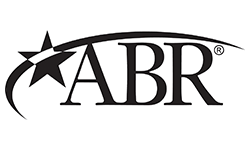If you’re thinking about owning or investing in residential real estate, there’s a term you need to add to your repertoire: “after-repair value” (often abbreviated to “ARV”). Simply put, ARV is the updated worth of a home after repairs or upgrades have been made to it, taking into account its original purchase price and the amount spent on renovations.
Often, ARV is discussed in the context of house flipping, but it’s beneficial for individual home hunters and property investors to understand as well. Here, we’ll explain the basics of ARV in real estate, including what it is, how to calculate it and who should use it.
What is after-repair value (ARV)?
When a person decides to flip a house, they’ll first buy the property and then invest in renovations to increase its offering price on the market. ARV is simply the new, improved value of that property – after the flipper makes all of their desired upgrades, repairs and remodels.
Why is ARV important? Because savvy flippers only want to invest in properties that they know will deliver a profit – and ARV can help them make that determination.
“ARV considers the value of the final rehabbed property and works as a way to find out how much money should be logical to invest,” says Martin Carreon, a real estate broker and owner of SoCo Wine Country Properties, a real estate agency in Santa Rosa, Calif.
How to calculate ARV
If you need to calculate the ARV on a particular home, use the following method to get a rough estimate. If you need a more precise figure, make sure to work with an appraiser.
1. Look at comparable properties
Your first step is to find five (or so) comparable properties – also known as comps – that have recently sold in the area where the home is located. You can find these listings through real estate sites like Realtor.com or your local MLS, or work with a real estate agent to find out if they’ve seen any homes similar to the one you’re interested in.
With comps, it’s best to find houses that are as similar as possible to yours in terms of location, age, size, condition and style. Ideally, these homes will have sold in the last several months or within the last year.
The more specific these factors, the more you can calculate an accurate ARV.
2. Determine the price per square foot
Next, divide each comp’s sale price by the home’s total square footage to determine its value per square foot. For instance, if a 2,500-square-foot comparable property sold for $500,000, it was priced at $200 per square foot. Run this math on each of the comps, then calculate an average across all of them.
3. Plug the numbers into the ARV equation
Once you’ve gathered this information, you can plug it into the following formula:
Average price per square foot (across all comps) X square footage of the property = ARV
Let’s walk through an example. Say we have our eye on a 2,000-square-foot fixer-upper. Let’s assume that we found five comps — recently sold, similar-size houses in the ‘hood — whose average price per square foot was $150. We’d multiply $150 by 2,000 to determine that the ARV on our targeted home is $300,000.
ARV and the 70 percent rule
While simply knowing a home’s ARV is useful, it’s even more powerful when used in conjunction with the 70 percent rule, which is a general real estate guideline that’s meant to help flippers determine the maximum amount they should spend on a home in order to make a profit.
Specifically, the 70 percent rule suggests that a flipper should only purchase a property if its price equals 70 percent or less than its ARV (excluding the cost of renovations). The formula to calculate this is:
(ARV X 0.7) – estimated cost of renovations = maximum offer price
Continuing with the last example, let’s say that our ARV is $300,000, and we expect to spend around $50,000 on repairs and upgrades. To find the maximum offer price, we would first calculate 70 percent of $300,000 – which is $210,000 – and then subtract the $50,000 repair costs. Therefore, our maximum offer price should be $160,000.
Who uses ARV?
ARV is incredibly valuable for flippers and real estate investors. For them, the main goal is to buy a home for a low price, spend money renovating it, and put it back on the market for a much higher price. In most cases, there’s no intention to live there themselves.
“Fix-and-flippers use ARV to understand the viability of a project,” says Dennis Shirshikov, a strategist at Awning.com, a real estate brokerage for investors. “Traditional investors often see this as ‘baked-in equity,’ since the repair costs increase the value of the property beyond the mortgage.”
Mortgage lenders also rely on ARV in real estate to assess how much money they’re willing to loan to flippers, investors and homeowners for their renovation projects. Basically, the more a home will be worth after repairs, the more money buyers can borrow in a home improvement loan.
Final word on ARV
ARV is a handy tool for flippers and real estate investors to understand two main things: whether or not a home is worth flipping and, if so, how much the property could sell for after renovations. It can also give home-hunting individuals a sense of whether that fixer-upper they’re eyeing is a good bargain at its current price, and how feasible obtaining financing for remodeling might be.
With that said, it’s important to remember that ARV is not an official price or a guaranteed figure. Instead, it’s an estimate based on a series of educated assumptions. A home’s actual value will vary depending on the comps chosen to calculate the ARV, the local real estate market and the actual renovation costs — to name just a few factors. And, of course, some of the variables can change over the course of the transaction process. Still, ARV can be a starting point to answer that all-important question: Is a particular property a good buy — or a money pit?
Continue reading




